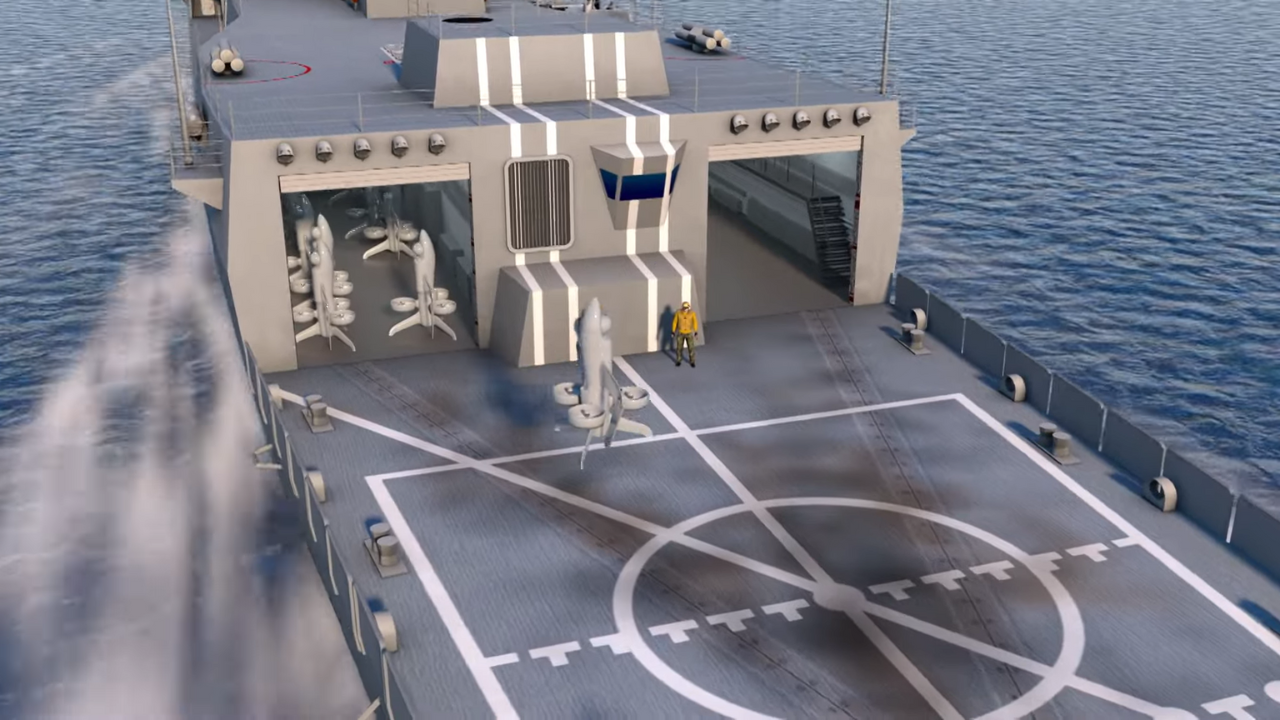NEW DELHI: The US military is set to introduce new uncrewed aircraft capable of carrying weapons and performing vertical take-off and landing (VTOL) operations. These experimental vehicles, known as X-planes, could be ready for test flights as early as 2026, according to the Defence Advanced Research Projects Agency (DARPA).
DARPA’s Advanced Aircraft Infrastructure-less Launch And Recovery (ANCILLARY) program is entering a new testing phase, where proposed designs will undergo risk assessment and efficiency analysis.The project aims to develop X-planes that can operate from aircraft carriers without the need for runways, supporting ground crew, or infrastructure, enabling them to function in a wider range of battlefield environments.
“X-plane” is a classifier used by the US department of defence (DOD) for experimental aircraft. Past X-planes include the Bell X-1 — the first crewed vehicle to break the sound barrier in conventional flight — and the X-15, which broke records in aerospace such as previously unachievable airspeeds and the successful use of novel propulsion techniques.
Several defence and aerospace contractors, including AeroVironment, Griffon Aerospace, Karem Aircraft, Method Aeronautics, Northrop Grumman, and Sikorsky (a Lockheed Martin subsidiary), are bidding for the project.
Each company has proposed unique designs for achieving VTOL capabilities, such as Sikorsky’s battery-powered craft that props itself on its tail and takes off like a helicopter, and Karem Aircraft’s heavy-fuel-driven vehicle that uses a tilting rotor for vertical take-off and hovering.
DARPA’s goal is to increase its use of uncrewed aerial systems (UAS) threefold in the coming years. The small size and low weight of ANCILLARY X-planes would allow the Navy to store more of these vehicles aboard ships compared to helicopters, launching them directly from the deck without the need for specialized equipment.
“Our performers are searching for innovative ways to increase payload weight and range/endurance of small, ship-launched UAS by means of novel configurations, propulsion, and controls while also removing the need for special infrastructure,” said Steve Komadina, DARPA program manager for ANCILLARY, in DARPA’s press release.
The ANCILLARY program is currently in phase 1b, with testing scheduled to run for 10 months from June 2024 to spring 2025. During this period, DARPA will evaluate the manufacturers’ designs based on system safety and hover tests.
The project will then progress to phase 2, where participants will propose details for X-plane design, construction, and test plans. Flight tests for the most promising designs are expected to begin in early 2026. Komadina also noted that future improvements to ANCILLARY systems could be achieved through advancements in sensors, artificial intelligence (AI), and autonomous vehicle technology.
DARPA’s Advanced Aircraft Infrastructure-less Launch And Recovery (ANCILLARY) program is entering a new testing phase, where proposed designs will undergo risk assessment and efficiency analysis.The project aims to develop X-planes that can operate from aircraft carriers without the need for runways, supporting ground crew, or infrastructure, enabling them to function in a wider range of battlefield environments.
“X-plane” is a classifier used by the US department of defence (DOD) for experimental aircraft. Past X-planes include the Bell X-1 — the first crewed vehicle to break the sound barrier in conventional flight — and the X-15, which broke records in aerospace such as previously unachievable airspeeds and the successful use of novel propulsion techniques.
Several defence and aerospace contractors, including AeroVironment, Griffon Aerospace, Karem Aircraft, Method Aeronautics, Northrop Grumman, and Sikorsky (a Lockheed Martin subsidiary), are bidding for the project.
Each company has proposed unique designs for achieving VTOL capabilities, such as Sikorsky’s battery-powered craft that props itself on its tail and takes off like a helicopter, and Karem Aircraft’s heavy-fuel-driven vehicle that uses a tilting rotor for vertical take-off and hovering.
DARPA’s goal is to increase its use of uncrewed aerial systems (UAS) threefold in the coming years. The small size and low weight of ANCILLARY X-planes would allow the Navy to store more of these vehicles aboard ships compared to helicopters, launching them directly from the deck without the need for specialized equipment.
“Our performers are searching for innovative ways to increase payload weight and range/endurance of small, ship-launched UAS by means of novel configurations, propulsion, and controls while also removing the need for special infrastructure,” said Steve Komadina, DARPA program manager for ANCILLARY, in DARPA’s press release.
The ANCILLARY program is currently in phase 1b, with testing scheduled to run for 10 months from June 2024 to spring 2025. During this period, DARPA will evaluate the manufacturers’ designs based on system safety and hover tests.
The project will then progress to phase 2, where participants will propose details for X-plane design, construction, and test plans. Flight tests for the most promising designs are expected to begin in early 2026. Komadina also noted that future improvements to ANCILLARY systems could be achieved through advancements in sensors, artificial intelligence (AI), and autonomous vehicle technology.

